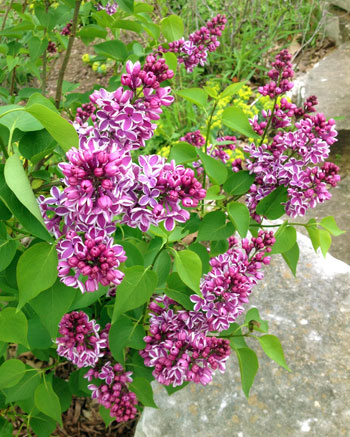Pruning spring flowering shrubs
Correct timing of pruning will preserve flowers on shrubs that bloom in the spring.
 Last week we answered a call at the Michigan State University Extension Garden and Landscape Hotline from a frustrated person that has grown a couple of lilacs for five years. Each spring when neighbor’s lilacs are blooming, her plants barely bloomed or had no flowers at all. She had made sure her lilacs had been fertilized each year and watered when conditions were dry.
Last week we answered a call at the Michigan State University Extension Garden and Landscape Hotline from a frustrated person that has grown a couple of lilacs for five years. Each spring when neighbor’s lilacs are blooming, her plants barely bloomed or had no flowers at all. She had made sure her lilacs had been fertilized each year and watered when conditions were dry.
The person answering the hotline asked her whether the lilac shrubs were growing in full sun. This sun-loving plant blooms best when it has six or more hours of full sunlight. The answer was yes, it is in full sun.
Next, she was asked if she had been pruning her lilacs each year and when. Her answer was she pruned them back each year in early spring to keep them well shaped. Bingo! Though pruning most shrubs in early spring is great for thinning and removal of dead wood, pruning to shape or reduce the size of the plant at this time would remove flower buds on spring flowering plants. Lilacs, as well as forsythia, spirea, weigela, viburnums and many other spring-flowering shrubs, form their flower buds the previous summer and pruning them in early spring would remove most of these flower buds.
Spring flowering shrubs are best pruned right after they are done blooming. Though our caller on the hotline was not hurting her plants, she was losing out on a beautiful display of blooms. Plants may not need to be pruned each year. Reasons to prune include the plant has become too large for site; stems have been damaged by insect and disease; plants are thin at base and only flower at tips of branches; and plant is overgrown with too many stems crowding each other.
Even on spring flowering plants, certain problems are best solved by pruning in early spring. It is always good to remove dead and dying branches prior to new growth coming out in spring. This directs energy to healthier buds. Removal of a few crowded stems each year will open up the interior of the plant, providing better air circulation and light penetration, reducing fungal diseases such as powdery mildew common to plants like lilacs and ninebark.
If you need to reduce the size or shape of the plant, wait until it is done flowering to prune and you will not miss out on spring’s beautiful display of blooms.



 Print
Print Email
Email




